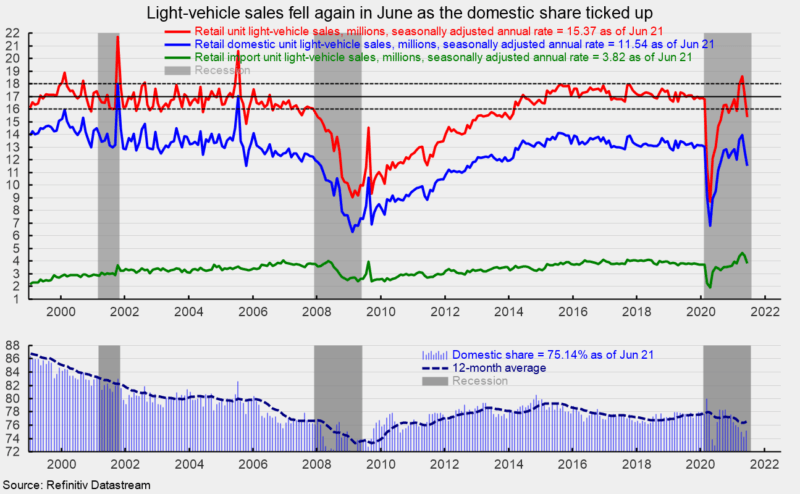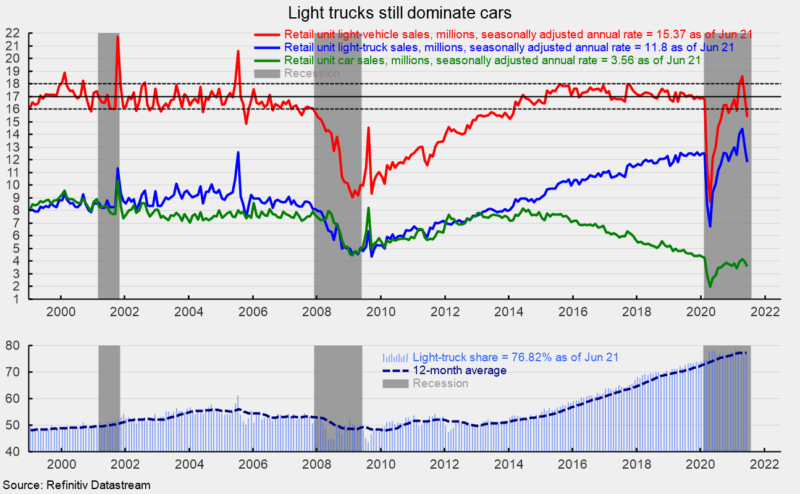Unit Auto Sales Fell in June
Sales of light vehicles totaled 15.4 million at an annual rate in June, down from a 17.0 million pace in May. The June decline was the first month below the 16 to 18 million range since a dip in February and is the third time sales have fallen below since the March and April 2020 plunge. Unit sales plunged in March and April 2020 to 11.4 million and 8.7 million annual rates, respectively (see first chart). The pace of sales in April 2020 was the lowest on record since this data series began in 1976 and follows a run of 72 months in the 16 to 18 million range from March 2014 through February 2020.
A computer chip shortage has disrupted production for many manufacturers, creating a scarcity for some models, leading to lower inventory and higher prices. Both factors may have contributed to the slower sales pace in June. The lack of chips is showing some signs of easing, but it may take some time for conditions to return to normal.
Breaking down sales by origin of assembly, sales of domestic vehicles fell to 11.5 million units versus 12.6 million in May, a drop of 10.3 percent, while imports fell to 4.4 million versus 4.7 million in May, a drop of 8.7 percent. The domestic share came in at 75.1 percent in June versus 74.2 in May, the first increase following five consecutive declines.
Breaking down by size of vehicle, June light-truck sales totaled 11.8 million at an annual rate versus a 13.1 million rate in May, a decline of 9.6 percent. Car sales were 3.6 million at an annual rate versus 4.0 million in May, a decrease of 10.6 percent (see second chart). The light-truck share stood at 76.8 percent for June, completely dominating the car share of 23.2 percent. The dominant share of light-trucks continues a long-term trend. As recently as February 2013, the split between cars and light-trucks (SUVs and pick-up trucks) was about even, with both segments selling about 7.8 million at an annual rate.







